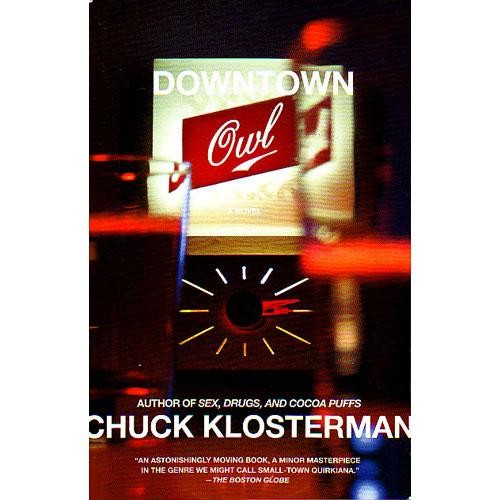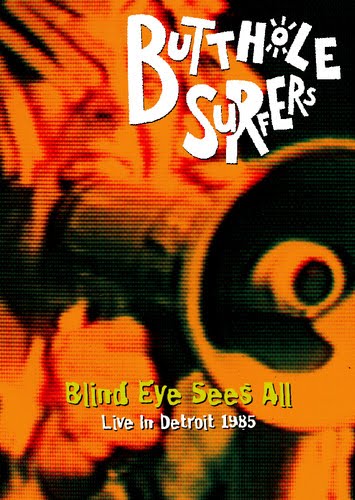
TvZTT
Townes van Zandt, Texas Troubadour box set – I’ve loved Townes van Zandt ever since I heard his cover of the Stones’ “Broken Flowers” playing in the Big Lebowski soundtrack. It’s ten times better than the original. Sadly, Roadsongs, the album of live covers that it is featured on, is out of print. But, happily, this box set is still available, and what a gem it is – collecting Townes’ first seven studio albums, along with a small handful of unreleased songs and live cuts, this includes all of his sixties and seventies output (!!) and has a few extras too (!!!). Collected here are the studio recordings For The Sake of the Song (his over-produced 1968 debut), Our Mother The Mountain (1969), Townes Van Zandt (1969), Delta Momma Blues (1971), High, Low and in Between (1972), The Late Great Townes Van Zandt (1972) and Flyin’ Shoes (1978). The years between those last two albums were more than Townes had ever waited before putting out music but longer waits were to come – Old Townes didn’t get another album out after Flyin’ Shoes until At My Window in 1987; there was only one more studio album to come, No Deeper Blue in 1994. Van Zandt passed away in 1997 after 52 years on this earth, most of the latter ones soaked in drugs and alcohol. And while it doesn’t offer all of the Live at the Old Quarter, Houston, Texas double disc, recorded in 1973, they do have the eight songs that are on it that are not repeated on studio albums (ie songs that he never got around to recording in the studio, but would play live – although this is not true, since the final song “Only Him Or Me” is doubled with the studio version).
A documentary on his life exists called Be Here To Love Me, which I really must see – no amount of Townes is ever enough! I listen to these songs, dripping in wordcraft and flush with emotion, thinking largely of Leonard Cohen, although they are as different as they are similar: both sang sad guitar songs infused with great melody and wonderful lyrics that share a country influence, but Van Zandt’s voice is so much more beautiful, and their backgrounds could not be more different (sure, they both came from moneyed backgrounds that they turned their backs on, but Cohen is from snowy, urban Montreal while Van Zandt comes from a Texas oil family). Gram Parsons would be a better comparison, but even that is not adequate – Van Zandt outlived Parsons, but was blue blue blue!
Townes’ first album, For The Sake of the Song, was released in 1968 and is full of dated flourishes. The first number, “For The Sake of the Song” is a fine folk tune that has some Mexican twinges; it’s a strong, healthy tune that makes you listen right away, mainly on the merit of Van Zandt’s strong yet mournful voice. Ditto for the second song, “Tecumseh Valley”, a mournful song that has a tap-tapping beat and backup singers, something that was not really Townes’ style. “For The Sake of the Song”, “Tecumseh Valley”, “Quicksilver Daydreams of Maria”, “I’ll Be Here In The Morning”, “Waitin’ Around To Die” and “Sad Cinderella” all get a less-busy stripped down sound on later albums, and they always sound exquisite without any distraction from Townes’ voice, which is like pure, liquid gold. “Waitin’ Around To Die” is splendid with its laid back pace on a later album, the one on the first album is good too, but it’s done dramatically like some chase scene in a cowboy epic, full of crazy, expressionistic percussion. Oooh!! You just need to hear how “Sixteen Summers, FIfteen Falls” shifts from something that would have been part of a folk festival into something out of a spaghetti western.
Our Mother The Mountain’s first song “Be Here To Love Me” is already sounding more stripped-down, with a very nice country tune, although one unnecessarily augmented by some cute flute work. “Our Mother The Mountain” is a very cool song, very dark, that starts off with voice, simple guitar, and bumpy bass, with a bit of spooky flute. It builds and builds and becomes a huge crashing piece of thunder. Great, great lyrics, like so many of Van Zandt’s songs, epics of the drama of a hard life like the one that he himself pursued.
The third Townes Van Zandt album, self-titled, starts off with the same song as his first album, this time around a highly stripped down version – voice and guitar (percussion is heard in parts). Beautiful. “Colorado Girl” has a very mellow Simon and Garfunkel feel to it. It is one of the first all-acoustic guitar and voice songs. “Delta Momma Blues” is a sweet, sweet song with some great fiddle. “Only Him or Me” is just sheer beauty, hard to listen to late at night when you’re alone; “tomorrow’s half of all you’ve got”. “Turnstyled, Junkpiled” sounds like it’s poking fun at Paul Simon, but it’s an old honkey tonk tune. “Nothin’” is a great old blues song; it is covered by Robert Plant on his Raising Sand album. “You Are Not Needed Now” starts off with wistful guitar blues, but picks up with cool churchy organ. “Mr Gold and Mr Mud” is a fast song that tells the tale of two gamblers with bizarry poke playing mythology. “No Lonesome Tune” has sublime guitar work at the end, just gorgeous. According to the liner notes, “To Live Is To Fly” is a tribute to Janis Joplin. “Don’t Let The Sunshine Fool Ya” is a great singalong. There are only a few covers on the album, but one of them is Hank Williams’ “Honky Tonkin’”, a fun ole tune. “Snow Don’t Fall” is a beautiful piano song, there are multiple version of “Fraulein” that are all fantastic, as are multiple versions of “Pancho and Lefty”. “If I Needed You” is sheer perfection, “Houseboat In Heaven” has gorgeous, groaning country pinache, and “Loretta” is spooky and wonderful with great harmonica tones often-copied by the Cowboy Junkies (great lyrics, and a nice Texas twang in believe “b’leev” – is that Emmylou Harris singing harmony here?). “Rex’s Blues” is pure Texas, “alone and low as low can be.” “Flyin’ Shoes” is sheer slinky gorgeousness, with an appropriately-dramatic opener. Wonderful. “Fall is a feeling that I just can’t lose.” “When She Don’t Need” me is a nifty, exquisite piano and guitar tune that grows and builds with full tunesmanship. Rounding out the collection are songs from “Live at the Old Quarter, Houston, Texas”, recorded in 1973 but released in 1977; these eight songs are supposed to be songs that don’t appear elsewhere in Townes’ early discography, although that doesn’t seem quite true – the closing song in the collection “Only Him Or Me” was also on Townes’ self-titled third album (but who cares – it’s a great song, and a more-than-appropriate closer for this collection). The first of these songs is “Two Girls” (it had been the fourth song from the double-CD set), and it starts with a primary school-level joke (“What’s white and crawls up your leg – Uncle Ben’s Perverted Rice”). The song is full of great lyrics:
Well the clouds didn’t look like cotton, they didn’t even look like clouds
I was underneath the weather, my friends looked like a crowd
The swimming hole was full of rum, I tried to find out why
All I learned was this my friend, you gotta swim before you flyJolly Jane just lays around and listens with her mouth
She’s had about a dozen husbands but the last one just pulled out
Now who’s gonna bring her dinner, through the weary years ahead
All she get from me is sympathy, got no time to see she’s fed
“White Freight Liner Blues” is sheer country, while the Merle Travis song “Nine Pound Hammer” is pure bliss, a really great song (and much more laid back than Merle’s version). Wonderful finger picking! “Chauffeur’s Blues” is more blues, while “Cocaine Blues” is more blues. Very bluesy. “Only Him Or Me” is a wonderful, triste song about lost love and stubborn loners, a great way to take out a collection about Texas’ loneliest star.
There are four songs on this collection that don’t appear on Townes Van Zandt albums, the first is “The Spider Song”, it’s guitar and voice and some weird cowboy hum-along. “Upon My Soul” is an old honky tonk, a gorgeous uppity Christian song, lovely, with great harmonica. “Buckskin Stallion Blues” is nice, but nothing special either, while “At My Window” is sleepy and beautiful.
There are a few eccentric songs on the album, though, that escape from the general spookiness of the beautiful voice, the perfect guitarwork and the dark themes. “Talkin’ Karate Blues” is a sort of strange tale that comes off as a sort of “Alice’s Restaurant”, which was released in October 1967. It’s kind of funny, but not really. “Silver Ships of Andilar” starts off nice, but becomes overly bombastic with the strings (it’s also unusually repetitive in its harmonies – think “The Wreck Of The Edmund Fitzgerald”). Townes’ cover of Bo Diddley’s “Who Do You Love” is kind of nutty, not at all his strength, but it still sounds pretty cool. “Dollar Bill Blues” is squeaky and atonal and very strange and weird. “Fraternity Blues”, from the live selection, is a pretty funny tale of a loner who decides to join a fraternity, but realises that he’s better-suited to a fraternity (“if you want to have friends, it’s gonna cost you”). “Talking Thunderbird Blues” is a cool/funny song about someone drinking’ Thunderbird. Wicked. “Thunderbird’s not an Indian trinket/ It’s a wine, man, you take it home and you drink it.”
It’s hard to resist the temptation to write about this release song for song and simply to day “this song is amazing too”, because they really all are! Anyone who likes Chris Isaac, Nick Drake (a Texas version of), Leonard Cohen (ditto), Bob Seger in his most wistful moments (a stretch, maybe) or Elliott Smith would fall deeply in love with Townes. What a treasure we’ve had among us.
I know of two Townes Van Zandt tribute albums by single artists – Townes, by Steve Earl, and Around Townes, by Janell Mosser.
Here are some interesting covers of Townes Van Zandt songs, some of which became very famous:















